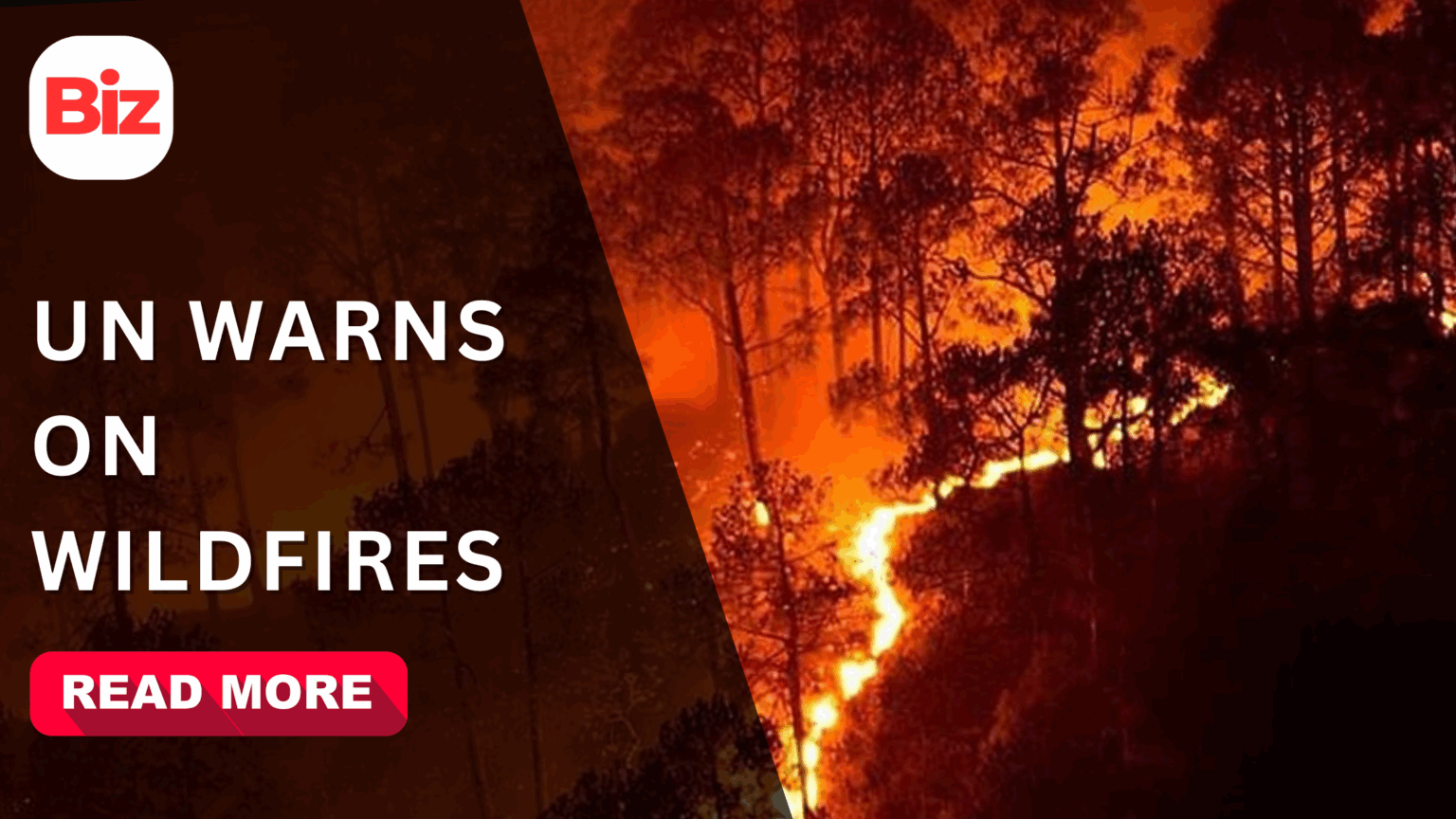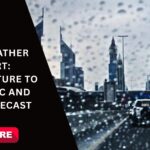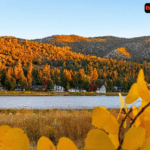- How Do Wildfires Start?
- Portugal Wildfires and Spain Wildfires: Europe’s Warning
- Canadian Wildfires: Smoke in Boston and Chicago
- Why Wildfires Are Getting Worse
- The Air We Breathe: From Fire to Pollution
- Health Impacts of Wildfire Smoke
- A Dangerous Climate Feedback Loop
- The UN’s Warning
- Breaking the Cycle: What Can Be Done
- Conclusion
Fire is no longer a seasonal problem hidden deep in the woods. They are occurring all over the world, in North America and in southern Europe, and they are hotter, spreading faster, and lasting longer than ever before. One spark of nature or the negligence of man can now cause destruction across the globe. And when fires burn, they not only burn trees and houses. They release smoke in the sky that pollutes the air, exacerbates climate change, and takes thousands of lives thousands of miles down the line.
How Do Wildfires Start?
The short answer? With a spark. Sometimes it’s lightning striking a dry hillside. In rare cases, volcanic eruptions or spontaneous combustion of parched vegetation light the match. But more often than not, it’s people. A campfire left burning, a thrown cigarette, or sparks from faulty power lines. These everyday accidents can unleash infernos.
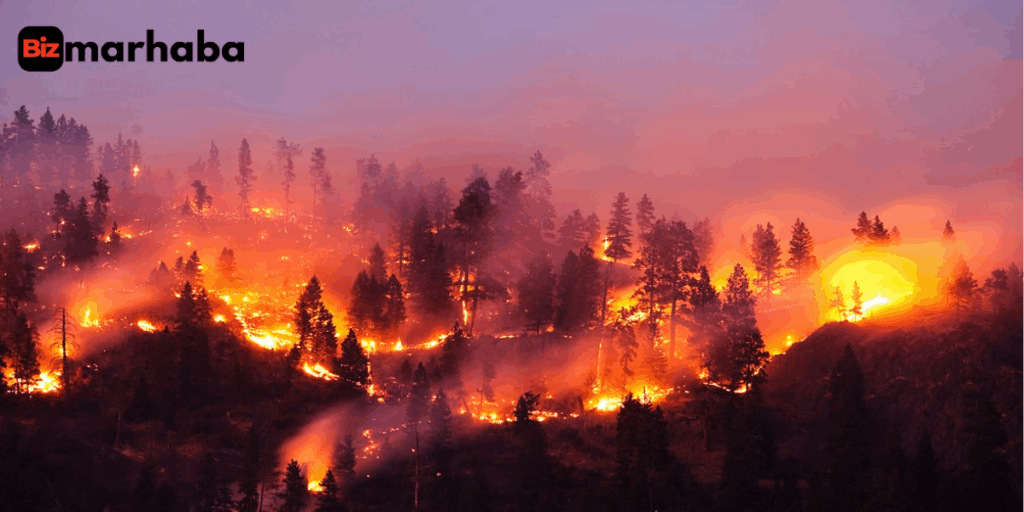
The difference today lies in the conditions. Extended drought, heat waves, and increased winds are all by-products of climate change and pose a very dangerous landscape, as they catch fire and burn faster with terrifying velocity. Experiments in the western U.S. indicate that climate change has already increased by two-fold the amount of land burned by fire in 30 years
The United Nations Environment Programme (UNEP) has warned that this combination of human mistakes and a warming climate has created a new era of megafires: larger, deadlier, and more frequent.
Portugal Wildfires and Spain Wildfires: Europe’s Warning
Europe’s recent past disasters paint a dark picture. The Portugal wildfires tore across more than 400,000 hectares in 2025, driving tens of thousands to flee and destroying whole communities. As specialists would later find, these fires became 40 times more likely and much more severe when sparked by climate change.
The Spain wildfires burned another 240,000 hectares just across the border. Scientists are now projecting fires that they used to claim are once in every 500 years instead of once in 10 or 20 years.
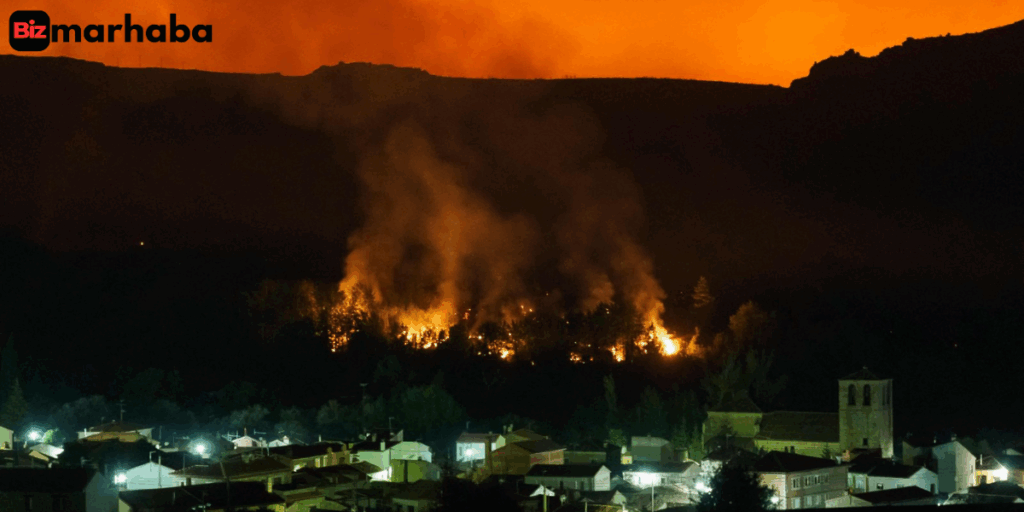
These events highlight the fact that fire seasons in Europe are now longer, more damaging, and more hazardous than they have ever been in modern history.
Canadian Wildfires: Smoke in Boston and Chicago
In 2024, North America had to pay its due. The Canadian wildfires raged like never before, great columns of smoke rose to the south. Great cities, such as Boston and Chicago, arose in funny orange skies.
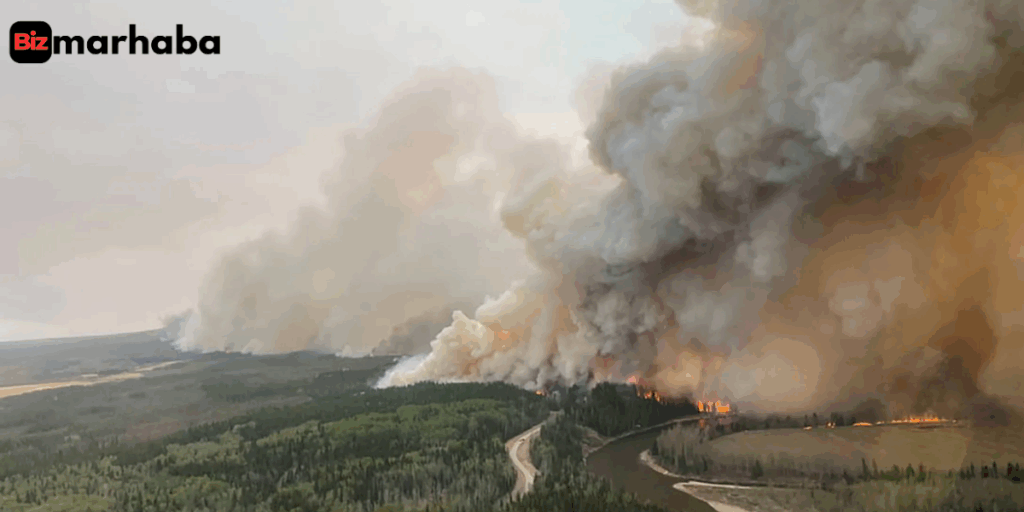
For residents, the shock was immediate. Searches for Canadian wildfires Boston surged as people tried to understand why the air smelled like burning wood hundreds of miles from the flames. In Chicago, the story was the same, Canadian wildfire Chicago dominated headlines as the air quality index soared into hazardous levels.
These events proved a point scientists have long made: wildfire smoke doesn’t stay local. It crosses borders, travels thousands of miles, and turns distant cities into pollution zones.
Why Wildfires Are Getting Worse
The trend is clear. Climate change is making wildfires larger, hotter, and more frequent. Hotter summers dry out forests. Rainfall patterns shift, leaving landscapes brittle. High winds then push flames far beyond what firefighters can reasonably control.
Every year, there are already wildfires that burn more than 370 million hectares worldwide. These fires release 1.8 billion tons of greenhouse gases, which supports the climate crisis. Forests, which comprise very little portion of land that is burnt, produce almost 80 percent of the emissions caused by fire.
It’s a dangerous cycle: Carbon is released to the atmosphere through fires, the carbon raises the temperature of the planet, the higher the temperature, the worse the fires become in the future. Scientists are predicting that without very fast action, wildfire disasters are going to increase by 14 percent by 2030, 30 percent by 2050, and 50 percent by 2100.
The Air We Breathe: From Fire to Pollution
Every wildfire is a pollution machine. Flames also emit small particles called PM2.5, black carbon, carbon monoxide, and ground-level ozone. These contaminants are not only targeted at the local cities, but they also travel with the wind across the continent.
In 2024, the World Meteorological Organization (WMO) confirmed that smoke from fires in Canada, Siberia, and the Amazon was detected across oceans. Europe, too, found itself blanketed by toxic haze from distant wildfires.
Scientists now describe wildfire smoke as a dangerous “witches’ brew.” The mix is invisible at times, but deadly, with long-term impacts that extend far beyond the burn zone.
Health Impacts of Wildfire Smoke
The health toll is astonishing. Small smoke particles are not filtered by the body and end up deep in the lungs and in the blood. This increases the risks of asthma, strokes, heart attacks, and premature death.
Air pollution is estimated by the World Health Organization (WHO) to cause the premature death of 4.5 million people annually. Out of them, approximately 1.5 million deaths per year are directly attributed to wildfire smoke. The developing countries where air filters and healthcare do not exist are the most affected.
And not only outdoor exposure. Smoke enters houses, schools, and workplaces. Studies indicate that more than 1 billion individuals experience at least one day annually, during which indoor air quality due to wildfire smoke may be unhealthy. Weak segments of the population-the elderly, children, and people with pre-existing conditions bear the brunt.
A Dangerous Climate Feedback Loop
Wildfires are not a symptom of climate change, but its acceleration. Fires emit billions of tons of carbon dioxide and remove natural carbon sinks such as forests in the process.
In 2023, massive fires in Canada, Greece, and the Amazon released 8.6 billion tons of CO₂, well above long-term averages. Even the Arctic, once thought immune, has flipped. Tundra fires released 640 million tons of CO₂ that same year, turning a natural carbon sink into a dangerous carbon source.
This feedback loop is a ticking time bomb. The more carbon fires release, the faster the planet warms, and the more fires we will see.
The UN’s Warning
The United Nations has been blunt: wildfire prevention cannot succeed without tackling both air pollution and climate change together. The World Meteorological Organization emphasized that treating these issues separately only delays solutions.
Ko Barrett, UN Deputy Secretary-General, summed it up:
“Climate change and air quality cannot be addressed in isolation. They must be tackled together.”
Breaking the Cycle: What Can Be Done
Experts say the tools exist, but action is lagging. Solutions include:
- Cutting greenhouse gas emissions to slow climate change.
- Practicing better land management: controlled burns, clearing brush, and using indigenous fire techniques.
- Expanding early-warning systems with satellites and AI models.
- Protecting communities with cleaner indoor air options, like affordable purifiers.
- Strengthening resilience so vulnerable regions can withstand longer, harsher fire seasons.
These steps won’t eliminate the risk, but they can dull the damage and save lives.
Conclusion
So, how do wildfires start? With a spark. But in today’s hotter, drier, and windier world, that spark becomes something much larger. The Portugal wildfires, the Spain wildfires, and the smoke from Canadian wildfires Boston to Canadian wildfire Chicago, all tell the same story: wildfires are no longer local events, they’re global crises.
They destroy landscapes, poison the air, and speed up climate change. The challenge now is clear. To stop the cycle, we must cut emissions, prepare communities, and act boldly. If we fail, orange skies and toxic air may become the world’s new normal.


